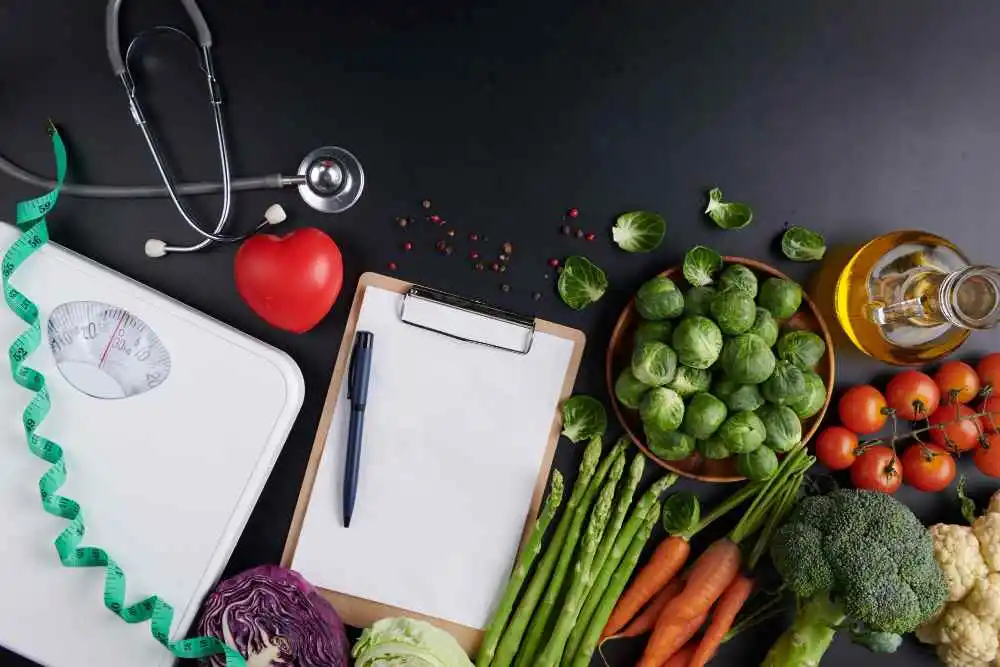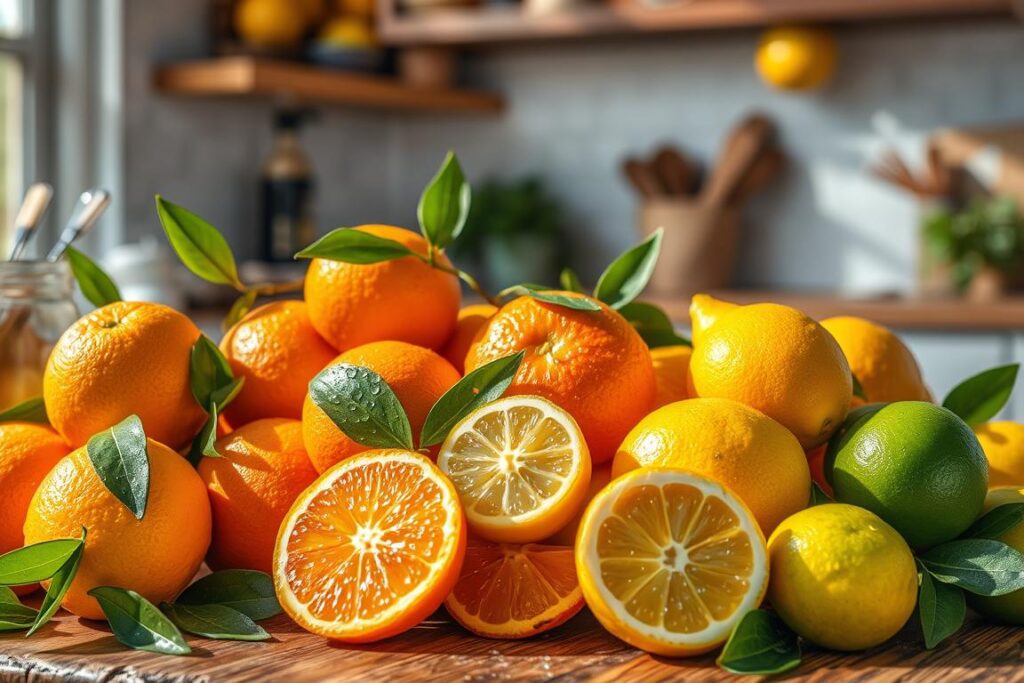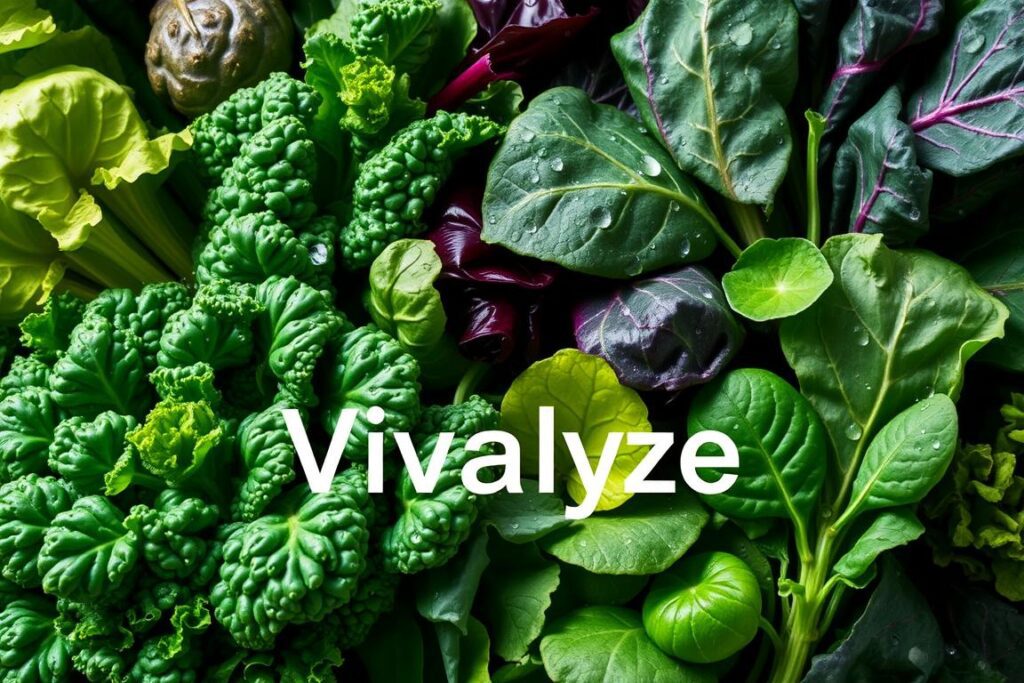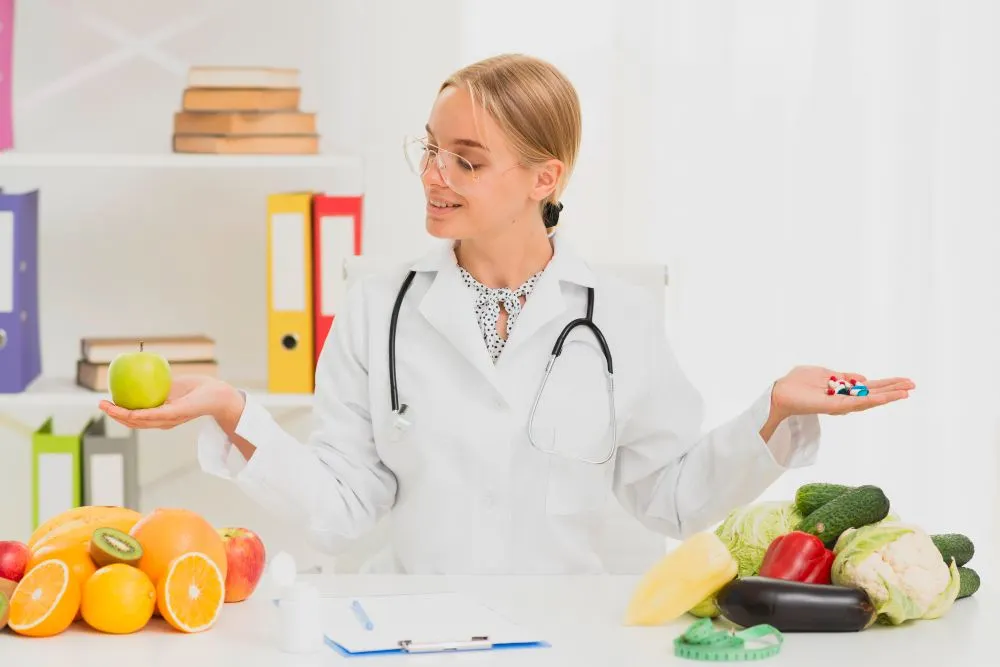Table of Contents
Managing high blood pressure is a daily challenge. It’s a silent killer that can harm your heart and increase the risk of serious health problems. But, you can control your blood pressure with simple diet changes. This guide will show you the 10 best foods to lower your blood pressure and improve your heart health.
High blood pressure, or hypertension, affects 48.1% of adults in the U.S. It is the number one cause of cardiovascular disease and stroke. By eating the right foods, you can manage your blood pressure and lower your risk of these serious conditions.
Your health is your most valuable asset. By choosing the right foods, you can take a big step towards a healthier life. Let’s explore the top 10 foods that can help you fight high blood pressure.

Introduction
Eating right is key to managing high blood pressure. Foods high in potassium, calcium, and magnesium can help lower your heart disease risk. The DASH diet is especially good at lowering blood pressure.
Importance of Diet in Managing High Blood Pressure
Hypertension is a big health issue, affecting over 65 million Americans. About 28% of adults in the U.S. have prehypertension, which raises their heart disease and stroke risk. Eating a heart-healthy diet can help manage hypertension and lower these risks.
Overview of the Best Foods for Reducing Hypertension
The DASH diet is all about eating more fruits, veggies, whole grains, lean proteins, and low-fat dairy. It’s rich in nutrients like potassium, calcium, and magnesium, but low in sodium, fat, and sugar. Many people see their blood pressure drop within two weeks of starting the DASH diet.

“The DASH diet has been proven to help lower blood pressure levels in many people.”
Other foods like citrus fruits, fatty fish, leafy greens, nuts, seeds, berries, and whole grains can also help. Adding these to your diet supports your heart health.
Citrus Fruits
Adding oranges, grapefruits, and lemons to your meals might help control high blood pressure. These fruits are full of vitamins, minerals, and compounds that are good for your heart. They can also lower your risk of high blood pressure.
The Surprising Benefits of Citrus Fruits
Research shows that eating citrus fruits can help with blood pressure. The American Heart Association suggests eating four to five fruits a day for heart health. A 2021 study found that eating about four oranges a day is good for blood pressure.
Also, eating oranges might lower your chance of getting high blood pressure. But, grapefruit and grapefruit juice can affect blood pressure medicines. Always talk to a doctor before eating grapefruit.

Citrus fruits are full of nutrients like vitamins, minerals, and antioxidants. These are key for heart health and reducing heart disease risk. They are also rich in potassium, which helps balance sodium and control blood pressure.
“Regular intakes of citrus fruits can be a tasty and powerful way to maintain cardiovascular health and lower blood pressure.”
Fatty Fish
Fatty fish are packed with omega-3 fats, which are great for your heart. Due to their anti-inflammatory properties, these FAs can exert a BP-lowering effect. Foods like mackerel, salmon, sardines, or mussels are full of omega-3. They have been involved in decreasing blood pressure.
High blood pressure is a big health risk. It can lead to heart attacks, strokes, or heart failure. Many people on blood pressure meds still have high blood pressure. Some may feel tired or dizzy, making it hard to stick to their treatment.
Omega-3 Fats in Salmon and Other Fatty Fish
Scientists are studying how oily fish can lower blood pressure. They’re looking at how fish oils work with blood vessel walls. They hope to find new treatments for high blood pressure based on this research.
Eating fish twice a week can help prevent heart disease. The American Heart Association suggests eating fish rich in unsaturated fats at least twice a week. Salmon, sardine, Atlantic mackerel, cod, herring, lake trout, and canned light tuna are all good sources of omega-3 fatty acids.
Studies on Omega-3 Fatty Acids and Blood Pressure
A 2022 study looked at 71 studies and health data from 4,973 people. It found that omega-3 fats from diet or supplements can lower blood pressure. The biggest benefit was seen with 2 to 3 grams of omega-3 fats daily, about a 3.5-ounce serving of salmon.
Higher levels of omega-3 fats in the diet may also lower high blood pressure risk in young adults. This is especially true for those without heart disease or diabetes. Adding oily fish to a Mediterranean-style diet can help prevent diseases related to high blood pressure.
“Eating fish rich in omega-3 fatty acids is preferable to taking supplements or consuming other omega-3 rich foods for heart health.”
Most adults should aim to eat two servings of omega-3-rich fish weekly. A serving size is 4 ounces (113 grams). Pregnant women and young children should also eat fish, but avoid high-mercury options.
Grilling, broiling, or baking fish is a healthier cooking method than deep-frying. While high levels of omega-3 fatty acids might be linked to prostate cancer, the benefits usually outweigh the risk of mercury exposure for most adults.
| Fatty Fish | Omega-3 Content | Recommended Intake |
|---|---|---|
| Salmon | 1.5-2.5 grams per 3.5-ounce serving | 2 servings per week |
| Sardines | 1.5 grams per 3.5-ounce serving | 2 servings per week |
| Mackerel | 3 grams per 3.5-ounce serving | 2 servings per week |
| Herring | 2 grams per 3.5-ounce serving | 2 servings per week |
| Tuna (canned light) | 0.5 grams per 3.5-ounce serving | 2 servings per week |
Leafy Greens
Leafy greens like spinach and Swiss chard are full of nutrients. They are great for managing high blood pressure. These veggies are packed with potassium, magnesium, and other good stuff that can lower blood pressure and boost heart health.
Research shows that eating more leafy greens can really help with blood pressure. A 2021 Danish study found that people who ate at least 1 cup of green leafy veggies daily had lower blood pressure and were at less risk for heart disease. A 2024 review in Nutrients also found that eating more leafy greens can lower blood pressure and improve heart health.
The nutrients in leafy greens that help with blood pressure include potassium, magnesium, vitamin C, and fiber. For example, 1 cup of cooked Swiss chard gives you 20% and 36% of your daily potassium and magnesium needs. A 2022 study also found that eating more potassium can lower blood pressure, especially in women with high sodium levels.
Leafy greens also have nitrates that can relax blood vessels and improve blood flow. Spinach, for instance, is full of nitrates and can help lower blood pressure. These greens are also rich in antioxidants, fiber, and other plant compounds that are good for your heart.

Eating more leafy greens like arugula, cabbage, kale, and Swiss chard can help manage high blood pressure and lower heart disease risk. The DASH diet, which focuses on fruits, veggies, whole grains, and low-fat dairy, is a proven way to lower blood pressure.
| Nutrient | Amount in 1 cup cooked Swiss chard | Percentage of Daily Value |
|---|---|---|
| Potassium | 961 mg | 20% |
| Magnesium | 150 mg | 36% |
| Fiber | 4 g | 14% |
“Increasing fiber in the diet, especially from dark green leafy vegetables, can significantly improve blood pressure, even after a diagnosis of heart disease or hypertension.”
Foods for High Blood Pressure
Keeping a healthy diet is key for managing high blood pressure. Adding certain foods to your meals can help lower your blood pressure. This supports your heart health.
The Importance of Dietary Approaches
The DASH diet is great for managing high blood pressure. This diet pattern is rich in fruits, vegetables, whole grains, and lean proteins. It also limits sodium, added sugars, and fats.
This balanced diet can lower your risk of heart disease and stroke, especially for women.
The DASH diet suggests eating 7-8 servings of grains, 4-5 servings of veggies and fruits, and 2-3 servings of dairy. It also recommends 2 or fewer servings of lean meats and fish. Nuts, seeds, and legumes should be 4-5 servings, and fats and oils 2-3. Sweets should be less than 5 servings a week, assuming a 2,000-calorie diet.
It’s also important to keep sodium intake under 2,500 mg a day. For those with high blood pressure, diabetes, kidney disease, or who are African American, aim for 1,500 mg. Processed and packaged foods are high in sodium, so always check labels for low-sodium options.
Adopting a DASH-style diet can help manage high blood pressure and improve heart health. By eating a variety of foods that help lower blood pressure, you’re taking a big step towards a healthier lifestyle.
Nuts and Seeds
Incorporating nuts and seeds into your diet can be a game-changer for managing high blood pressure. These foods are packed with nutrients that help regulate blood pressure levels.
Studies show that eating nuts regularly can lower the risk of high blood pressure. Adults should aim for 4 to 6 servings of unsalted nuts each week. Almonds, macadamia nuts, hazelnuts, and pecans are especially good for your heart. It’s best to choose raw or dry-roasted nuts over those cooked in oil for better health benefits.
Seeds like pumpkin seeds, flaxseed, chia seeds, and walnuts also help lower blood pressure. They are rich in fiber, arginine, and other nutrients that support healthy blood vessels and blood pressure regulation.
Calorie and fat content vary among nuts. For example, almonds have 170 calories and 14.9 grams of fat per ounce. Walnuts are high in omega-3 fatty acids, which are good for the heart. Nut oils are nutritious but lack fiber, with walnut oil being especially rich in omega-3s.
“Nuts and seeds are a powerhouse of nutrients that can truly benefit those struggling with high blood pressure. Incorporating them into your diet in a balanced way can make a real difference in your cardiovascular health.”
If you’re trying to manage your blood pressure, consider adding more nuts and seeds to your diet. With their wide range of nutrients and proven health benefits, these ingredients can be a great addition to a heart-healthy lifestyle.
Berries
Berries are not only tasty but also good for your health. They can help lower your risk of heart disease by reducing blood pressure. Berries are packed with antioxidants, like anthocyanins, which give them their bright colors.
These anthocyanins boost nitric oxide in your blood. This can help relax blood vessels and lower blood pressure.
A 2020 study looked at berries and blood pressure. It found that berries, including juice, can lower blood pressure by over 3 mm Hg. Cranberry juice had the biggest impact.
The USDA suggests eating 2 cups of fruit a day. A serving of blueberries is about 1 cup fresh or frozen, or half a cup dried.
Eating different berries, like blueberries, raspberries, and strawberries, can be tasty and good for your heart. These fruits are full of antioxidants that may help control high blood pressure.
“Consistent findings support the theory that anthocyanins and anthocyanin-rich berries can lower blood pressure.”
Whole Grains
Adding whole grains to your meals can help control high blood pressure. Foods like oats, quinoa, and brown rice are full of nutrients. They also offer benefits that can lower your risk of hypertension.
The Nutrient-Dense Advantage of Whole Grains
Whole grains are rich in vitamins, minerals, and fiber. These nutrients help control blood pressure. It’s good to eat at least 3 ounces (85 grams) of whole grains every day. Half of your grains should be 100% whole grain.
One ounce (28 grams) of grains is like half a cup of cooked rice or pasta. It’s also like one medium slice of bread or one medium tortilla.
The fiber, magnesium, and potassium in whole grains support healthy blood pressure. Whole grains also have antioxidants that fight oxidative stress. This stress can lead to high blood pressure. Eating different whole grains like quinoa, oats, and brown rice helps manage hypertension.
The Science Behind Whole Grains and Blood Pressure
Research shows whole grains can lower blood pressure. A 2020 study in Nutrients found whole grains can save on healthcare costs. Whole grain cereals also help prevent heart diseases.
Experts like the American College of Cardiology recommend whole grains for high blood pressure. The Dietary Guidelines for Americans also suggest eating half or more of your grains as whole grains.
Eating whole grains regularly can help manage hypertension and improve heart health. Try different whole grains like oats, quinoa, and brown rice. Find what you like and fits your diet.
“Whole grains are a simple yet powerful tool in the fight against high blood pressure. Incorporating them into your daily meals can make a meaningful difference in your cardiovascular health.”
Yogurt
Yogurt is a nutrient-dense food item for high blood pressure prevention. It’s full of minerals like potassium and calcium, which are key for blood pressure control. Studies show that yogurt can help lower blood pressure, especially for those with hypertension.
The minerals in yogurt, like potassium, balance out sodium’s effects on blood pressure. Calcium and magnesium also support blood vessel health and heart well-being.
Choose unsweetened, natural, or Greek yogurt for its health benefits. These types have less sugar and more nutrients. Mix your yogurt with fruits, nuts, and seeds for a tasty, healthy snack or breakfast.
| Nutrient | Amount in 1 Cup of Yogurt | % of Daily Recommended Intake |
|---|---|---|
| Calcium | 415 mg | 42% |
| Potassium | 573 mg | 12% |
| Magnesium | 42 mg | 10% |
Adding yogurt to your diet can help manage blood pressure and support heart health.
“Yogurt is very high in calcium, potassium, and magnesium, which may contribute to its potential blood pressure-lowering effect among hypertensive individuals.”
Vegetables
Vegetables are key in managing high blood pressure. They are full of nutrients. Beets and tomatoes are just a few examples of these superfoods. They help keep blood pressure in check.
Beets and Carrots: Nature’s Nitrate-Rich Wonders
Beets are great for blood pressure. They have lots of dietary nitrate. This can lower blood pressure in the short and long term.
A 2022 study showed that beetroot juice can lower blood pressure. Carrots also have compounds that may help lower blood pressure. Eating 100 grams of carrots a day can lower high blood pressure risk by 10%.
Tomatoes: The Antioxidant-Packed Hypertension Fighters
Tomatoes are tasty and full of antioxidants. Lycopene in tomatoes is good for heart health and blood pressure. Adding tomatoes to your diet can help your heart and manage blood pressure.
Eating a balanced diet with lots of veggies is important for blood pressure. Include veggies like leafy greens, beets, carrots, and tomatoes. Pair them with whole grains, lean proteins, and low-fat dairy for a healthy diet.
Conclusion
Eating foods like citrus fruits, fatty fish, and leafy greens can help with high blood pressure. Adding nuts, seeds, berries, whole grains, yogurt, and veggies like beets and carrots is also good. These foods are key to managing blood pressure and lowering heart disease risk.
The DASH diet is a great way to eat these foods and naturally lower blood pressure. It focuses on foods that are good for your heart. This diet can help you control your blood pressure better.
The DASH diet limits sodium to 2,300 mg a day, aiming for 1,500 mg. It also cuts down on saturated and total fats. It suggests eating more whole grains, fruits, and veggies, and less saturated fats.
By changing your diet and eating the right foods, you can manage your health better. The DASH diet is a helpful tool for doctors to treat high blood pressure. Eating heart-healthy foods is a great way to keep your blood pressure in check.
FAQ : Frequently Asked Questions
What are the best foods for high blood pressure?
The top foods for high blood pressure include citrus fruits, fatty fish, and leafy greens. Nuts and seeds, berries, and whole grains are also great. Yogurt and veggies like beets, carrots, and tomatoes are good too.
How can citrus fruits help lower blood pressure?
Citrus fruits like oranges, grapefruits, and lemons are full of vitamins and minerals. They help fight heart disease and lower blood pressure risk. Eating citrus fruits can lower your blood pressure risk.
What are the benefits of omega-3 fats from fatty fish for blood pressure?
Fatty fish like salmon are rich in omega-3 fats, which are good for your heart. Omega-3 fats can lower blood pressure by reducing inflammation. Eating 2 to 3 grams of omega-3 fats daily is best.
How can leafy greens help manage high blood pressure?
Leafy greens like spinach and Swiss chard are full of potassium and magnesium. These nutrients help keep blood pressure healthy. Eating more leafy greens can lower your blood pressure.
What’s DASH, and how does it help you lower your blood pressure?
The DASH diet emphasizes fruits, vegetables, whole grains, and low-fat dairy
The DASH diet focuses on fruits, vegetables, whole grains, and low-fat dairy. It limits sugar, sodium, and saturated fat. This diet can help lower your blood pressure naturally.
How can nuts and seeds help manage hypertension?
Nuts and seeds like pumpkin seeds, flaxseed, and almonds are packed with nutrients. They have fiber and arginine, which help control blood pressure. Some studies show they can lower blood pressure.
What are the blood pressure-lowering benefits of berries?
Berries are full of antioxidants called anthocyanins. These increase nitric oxide in the blood and reduce blood flow restriction. Studies show berries can lower blood pressure.
How can whole grains like amaranth help manage high blood pressure?
Whole grains like amaranth, quinoa, and brown rice are rich in fiber and magnesium. They may lower hypertension risk. Eating whole grains can prevent high blood pressure.
What are the benefits of yogurt for blood pressure?
Yogurt is packed with potassium and calcium, which regulate blood pressure. Research shows yogurt can improve blood pressure, especially for those with hypertension.
How can vegetables like beets, carrots, and tomatoes help lower blood pressure?
Vegetables are key for a heart-healthy diet. Beets, carrots, and tomatoes are full of nutrients that help lower blood pressure. Tomatoes also have lycopene, which is good for heart health.



1 comment
[…] are full of soluble fiber, which is good for your blood sugar and heart health. For a quick, healthy breakfast, mix oats with milk or plant-based milk. […]